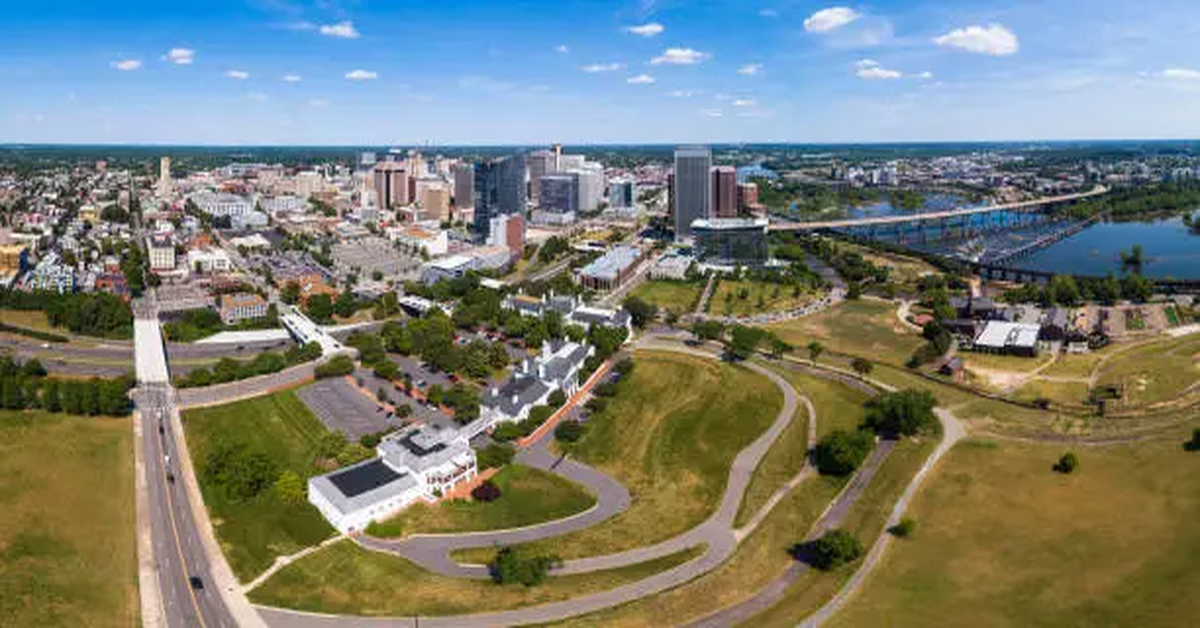
The phrase “571 Virginia” can be interpreted in multiple ways depending on context—it may refer to an area code within Virginia, a numerical address or marker that holds regional importance, or even symbolic representation of a specific community or landmark within the Commonwealth of Virginia. No matter how one approaches it, 571 Virginia ultimately ties back to the cultural, geographical, and historical narrative of Virginia, one of the most historically rich and influential states in the United States.
This article provides an extensive, 3000-word exploration into “571 Virginia,” covering history, geography, demographics, economy, cultural heritage, community life, and future outlook. The aim is to give readers a full understanding of what this phrase represents while grounding the discussion in meaningful insights about Virginia as a state and its specific northern region connected to the 571 area code.
Understanding the Meaning of “571 Virginia”
To begin, it is essential to decode what “571 Virginia” refers to. In modern usage, the term “571” most commonly aligns with the 571 area code that serves Northern Virginia. This includes parts of Arlington, Alexandria, Fairfax, and Loudoun counties—areas that border Washington, D.C., and hold immense cultural, political, and economic significance.
Thus, “571 Virginia” can be seen as shorthand for Northern Virginia’s rapidly growing and highly connected metropolitan region. It is a space where historical roots meet modern innovation, where communities reflect both traditional Virginian heritage and the fast-paced, diverse character of the greater D.C. metropolitan area.
Historical Overview of Virginia and the 571 Region
Virginia, often called the “Mother of States” and the “Mother of Presidents,” has been central to the story of the United States since colonial times. The region that the 571 area code covers, particularly Northern Virginia, has always been closely tied to national governance, infrastructure, and defense because of its proximity to Washington, D.C.
Historical Phases
| Period | Key Features | Importance to 571 Virginia |
|---|---|---|
| Colonial Era | Settlement, plantations, trade routes. | Early establishment of Virginia’s economy and society. |
| Civil War Era | Strategic battles, border tensions. | Proximity to Washington, D.C., made Northern Virginia a focal point. |
| 20th Century | Military bases, suburban growth, highways. | Region became home to defense contractors and federal employees. |
| 21st Century | Technology, international migration, urban sprawl. | Northern Virginia transformed into a hub of innovation and diversity. |
The story of 571 Virginia is, therefore, deeply connected to the nation’s own story—shaped by war, politics, migration, and technology.
Geography of 571 Virginia
Geographically, the 571 area of Virginia lies in the Northern Virginia region, stretching across suburban landscapes, rivers, and foothills that merge with the Appalachian chain in the west. Its proximity to Washington, D.C., provides a unique blend of urban access and suburban lifestyle.
Geographical Highlights
- Rivers: The Potomac River defines much of the area’s border and historical trade.
- Topography: Rolling hills, forests, and expanding suburbs dominate.
- Urban Centers: Arlington and Alexandria feature dense, urban-style living.
- Suburban Growth: Loudoun and Fairfax counties are among the fastest-growing in the U.S.
This geography provides a balanced mix of natural beauty and modern infrastructure, making Northern Virginia both livable and economically dynamic.
Demographics and Diversity
The population of 571 Virginia reflects a remarkable level of diversity. The area has become a melting pot of cultures, driven by international migration, federal employment opportunities, and the rise of technology industries.
Demographic Characteristics
| Factor | Description |
|---|---|
| Population Growth | Among the fastest-growing populations in the state. |
| Ethnic Diversity | Large communities of Asian, Latino, African, and Middle Eastern origin. |
| Education | High concentration of college graduates and advanced degree holders. |
| Income | Some of the highest median household incomes in the United States. |
| Age Distribution | Younger population compared to rural Virginia, due to jobs and urban lifestyle. |
This diversity translates into vibrant cultural life, multilingual communities, and global perspectives shaping everyday life.
Economy of 571 Virginia
The economy of 571 Virginia is a powerhouse, driven by its connection to Washington, D.C., technology hubs, and international business.
Economic Pillars
- Federal Employment: Thousands work in government agencies, from defense to administration.
- Defense and Contracting: Home to the Pentagon and countless contractors.
- Technology: Northern Virginia hosts a vast number of data centers, startups, and IT firms.
- Real Estate: Growing population drives a thriving housing market.
- Education and Healthcare: Large investments in public schools, universities, and hospitals.
Economic Breakdown Table
| Sector | Contribution | Examples |
|---|---|---|
| Government | Largest employer | Pentagon, DHS, federal contractors |
| Technology | Growing rapidly | Data centers in Loudoun, tech firms in Fairfax |
| Healthcare | Expanding sector | Inova Health, Kaiser Permanente |
| Real Estate | Rising demand | High-value housing near D.C. |
| Education | Strong presence | George Mason University, NOVA Community College |
This economic diversity ensures resilience and continued growth.
Culture and Lifestyle in 571 Virginia
Culture in this region blends traditional Virginian heritage with cosmopolitan diversity. While rural Virginia values farming, small-town festivals, and historic preservation, 571 Virginia reflects a more globalized lifestyle.
- Food Culture: Restaurants feature cuisine from nearly every continent.
- Festivals: Annual multicultural parades, heritage festivals, and arts events.
- Arts and Music: A thriving scene in Arlington and Alexandria with galleries, theaters, and concerts.
- Sports: Proximity to D.C. teams like the Washington Commanders, Nationals, and Capitals, alongside youth and high school leagues.
- Historic Preservation: Civil War sites and colonial landmarks coexist with modern skyscrapers.
Lifestyle here combines suburban comfort, urban convenience, and cultural richness.
Education and Research
571 Virginia boasts one of the strongest educational infrastructures in the country. Families are drawn to the area for its high-performing public schools and access to universities.
Educational Highlights
- Public Schools: Fairfax County Public Schools rank among the best nationally.
- Universities: George Mason University leads in research and innovation.
- Community Colleges: Northern Virginia Community College provides broad access to education.
- Research Centers: Close ties with federal institutions promote innovation.
This educational environment produces a skilled workforce that supports economic growth and maintains the region’s competitive edge.
Transportation and Infrastructure
Transportation is both a strength and a challenge for 571 Virginia.
Key Features
- Highways: Interstates 66 and 95, Beltway (I-495).
- Metro Access: Washington Metro system connects Northern Virginia to D.C.
- Airports: Washington Dulles International Airport and Reagan National Airport.
- Public Transit: Expanding bus and rail services.
However, traffic congestion is a persistent issue due to rapid population growth, making transportation planning critical for the future.
Community Life and Housing
The housing market in 571 Virginia is one of the most dynamic in the country. Communities range from urban apartments to suburban homes and luxury estates.
Housing Characteristics
| Feature | Description |
|---|---|
| Urban Options | Condos and apartments in Arlington and Alexandria. |
| Suburban Expansion | Single-family homes in Fairfax and Loudoun. |
| Affordability | Housing costs are higher than national averages. |
| Trends | Rising demand due to tech and federal jobs. |
Community life is enriched by homeowner associations, strong school systems, and civic engagement.
Challenges in 571 Virginia
Despite prosperity, the region faces challenges that require attention:
- Traffic and Transportation: Congestion affects quality of life.
- Housing Affordability: Rising costs push some families out.
- Environmental Pressures: Suburban sprawl impacts green spaces.
- Equity Gaps: Despite wealth, income inequality persists.
- Identity Balance: Balancing traditional Virginian identity with modern global culture.
These issues highlight the importance of sustainable planning.
Future Outlook
The future of 571 Virginia looks bright, with continuous growth in technology, education, and global influence. Emphasis on sustainable development, green infrastructure, and inclusive policies will shape the region positively.
Potential developments include:
- Smart city technologies.
- Expanded public transportation.
- Greater emphasis on renewable energy.
- Continued role as a global tech hub.
Conclusion
571 Virginia represents more than an area code—it embodies a thriving region within the Commonwealth of Virginia where history, culture, economics, and global diversity converge. With strong infrastructure, a skilled workforce, and a vibrant community, this part of Virginia is both a reflection of America’s past and a blueprint for its future.
FAQs
1. What does 571 Virginia refer to?
It typically refers to the 571 area code in Northern Virginia, covering regions like Arlington, Fairfax, and Loudoun.
2. Why is 571 Virginia important?
It represents one of the fastest-growing, most diverse, and economically powerful regions in Virginia and the United States.
3. What industries drive 571 Virginia’s economy?
Government, technology, defense contracting, healthcare, education, and real estate dominate.
4. What challenges does the region face?
Key challenges include traffic congestion, high housing costs, environmental pressures, and equity gaps.
5. What is the future outlook for 571 Virginia?
With investments in technology, transportation, and sustainability, the region is set to remain a hub of growth and innovation.





